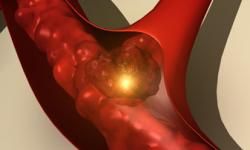Despite all the ways to interact with others in our technologically savvy world, those with social anxiety disorder feel boxed in by the shrinking globe. According to the National Institutes of Health (NIH), people with social anxiety disorder have an "intense, persistent, and chronic fear of being watched and judged by others and of doing things that will embarrass them," and that fear can be so intense that it interferes with work, school, and other ordinary activities and can make it hard to make and keep friends. But the condition has physical manifestations, too, including trembling, upset stomach, heart palpitations, confusion, and diarrhea. The cause hasn't been nailed down, but social anxiety disorder is probably due to a combination of environmental and hereditary factors. About 15+million people in the United States are affected by social anxiety disorder, which usually begins during childhood. Like other anxiety disorders, treatment often involves medication and psychotherapy.
CONTRIBUTING WRITERS:
Helen Davies, Marjorie Dorfman, Mary Fons, Deborah Hawkins, Martin Hintz, Linnea Lundgren, David Priess, Julia Clark Robinson, Paul Seaburn, Heidi Stevens, and Steve Theunissen







